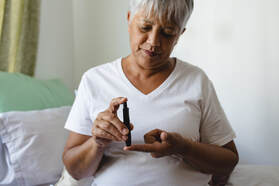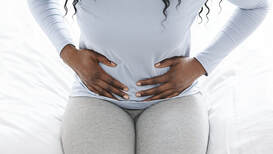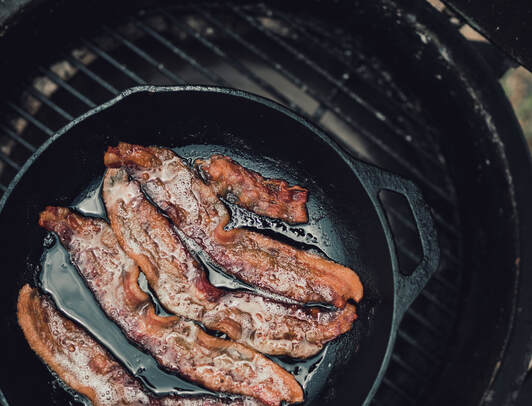|
Welcome back to the ketogenic odyssey. After Part 1, you know what it is, the benefits, and contraindications. Let’s now discuss how to get into ketosis, signs of ketosis, and my concerns related to the ketogenic diet. Getting into ketosis is not as easy as simply switching to Bulletproof Coffee for breakfast. There are various factors that hinder one from rapidly entering ketosis. For instance, an individual with a higher percentage of body fat will take longer to enter a ketotic state than a leaner individual. Therefore, nutritional ketosis can take anywhere from 1-4 weeks depending on your body fat %, exercise regimen, stress levels, sleeping patterns, and chosen macronutrient breakdown. Be diligent, but patient with the process. The faster you slam into ketosis, the more painful your entry. More on that later. Choose Your Preferred Method Your love of neurotic behaviors and numbers will determine if you want to execute this loosely or meticulously. Regardless, some type of tracking and self-experimentation is likely required to finesse yourself to success. Method 1: Simply track carbohydrate intake. Start at 60-70 grams of carbohydrates per day, which will possibly induce nutritional ketosis. You can find the number of grams on any label or refer to an online resource for produce. There are plenty of useful apps out there for further assistance. If you’re not seeing the needle move, you can lower the carbohydrate grams slowly and/or decrease protein intake. This is likely a good starting point for most newbies. Method 2: Choose a specific ratio of carbohydrate/fat/protein. Unless you’re doing this for therapeutic purposes, immoderate ratios and calorie counting are unnecessary. Start with general percentages of approximately: Carbohydrates: 10-15% (4 kcal/g) Protein: 15-20% (4 kcal/g) Fat: 60-75% (9 kcal/g) Calculations for Easy Tracking: Let’s say you established a daily caloric intake of 2000 kcal and a designated ratio of 10% CHO/15% Protein/75% Fat The quantity of grams for each macronutrient is: Carbohydrates 10%: 2000 kcal multiplied by .1 = 200 kcal Divided by 4 kcal/g= 50 grams of carbohydrates per day Protein 15%: 2000 kcal multiplied by .15 = 300 kcal Divided by 4 kcal/g= 75 grams of protein per day Fat 75%: 2000 kcal multiplied by .75= 1500 kcal Divided by 9 kcal/g= 167 grams of fat per day Extreme ratios or fast entry lends itself to undesirable side effects, therefore go slow or perhaps start with a Paleo-type diet. If you have a chronic disease, you may want to work with a functional professional that will help choose ratios that work with your body and disease state. For example, if you have kidney issues; an elevated protein intake may worsen your renal issue if not adeptly executed.  How Do You Know You’re in Ketosis? Once you’ve selected a tracking method that works for you, how do you know you’re moving in the right direction? There are various indications of a ketotic state; however, possible discomfort may occur at the beginning due to dramatic alterations in the fuel supply. Think of these signs as annoyingly encouraging. The following are the most common signs of ketosis:
Fighting the "Flu" The uncomfortable experience of the “keto" flu is minimized with adding electrolytes to your diet. The ketogenic diet is quite dehydrating because there are less carbohydrates to pull water into the system. Therefore, electrolyte and fluid imbalances are super common. Try supplementing with potassium, magnesium, and sodium chloride (salt) daily. In addition, be quite liberal with water intake as the keto flu is typically due to rapid entry, dehydration, and/or electrolyte imbalances.  I am in the Keto Zone…Now What? Integrating the diet successfully teeters on the daily, delicate dance between blood sugar and ketone levels. If ketones are too high, you’re in trouble. If blood sugar is too low, you’re in trouble. Put those two together at the same dinner table and you’re really in trouble. The absolute best way to do this is daily monitoring, but unfortunately people tend to “skip” this important practice and I would strongly encourage you to do otherwise. The lower the ratio or grams of carbohydrates, the more important it is to adopt a daily monitoring practice. If you are unwilling to do this, then you need to back off or you will likely not feel well, and worse, possibly hurt your body over time. Monitoring Practices on the Ketogenic Diet There are three methods to measuring ketones: breath, urine, and blood. The gold standard by far is a blood test. There are various high-quality meters available for daily use. Urine strips are easier and less expensive; but accuracy is highly influenced by hydration status. The breath test is the new kid on the block and at this point is quite expensive and does not outperform the blood test. Monitoring Goals: Daily Blood Measurements Goal: Ketone range of .5-3.0 mmol/L. Daily Urine Measurement Goal: Different urine strips vary with different brands but, in general, the darker the color indicates increased ketones. Remember, urine tests are sensitive to your hydration status so the results are only a rough estimate and rarely exact. Daily Breath Measurement Goal: Ketone range from 4 to 30 ppm.  The more stringent you are with carbohydrates, the more important it is to use the blood meter. Regardless, you should be checking your ketones twice a day: morning and night to get a good idea how you’re doing with the diet. If you absolutely refuse daily, finger pricks, then you have 3 options:
You’re not going to like this next piece of advice, but you should purchase a glucometer as well. The number one mistake I see with the ketogenic diet is inadequate caloric intake. The diet often decreases hunger; therefore, people eat less. The problem with this is the blood sugars get too low. If you’re not feeling well, you need to check your blood sugars and ketones. The solution is not to eat more fat if the ketones are high and the blood sugars are low. This common blunder simply dumps more ketones in your body. Remember, the no-fly zone is combining excessively high ketones with excessively low blood sugars. The solution is obviously to eat a small portion of carbohydrates. Don’t be afraid of doing so, as your brain cannot run on 100% ketones, and severe hypoglycemia is incredibly dangerous. Best practices include daily monitoring of ketones and blood sugars. But, if you’re unwilling to measure blood sugars, at minimum, monitor ketones via urine. In this case, ignorance is definitely not bliss. Laboratory Markers I strongly advise you get baseline markers at the beginning of your diet and every 3 months until you get super savvy. The ketogenic diet is extreme. Don’t assume that your body functions perfectly and that everything is efficiently processed and extracted as intended. There are necessary enzymes and cofactors needed for proper macronutrient metabolism. The diagnostic list is long because safety (and effectiveness) are always my priority, but the basic assays to keep your eyes on are: CMP (Complete Metabolic Panel) Lipid Panel (Cholesterol, Triglycerides, etc.) CBC with differential (Complete Blood Count) I’ve seen cholesterol shoot up 200 points in less than 6 weeks from the ketogenic diet! Yikes. Flippancy and the ketogenic diet never belong in the same room; which is why I always encourage people to get help in ensuring the diet is done properly. Does this sound like a bunch of work? It is…and there’s more.  Snags of Going Keto Let’s assume that you’re the perfect candidate for the ketogenic diet, you check your ketones diligently and adhere daily to the prescribed macronutrient ratio. Here’s where the diet may create problems:
Which leads me to my next point…
Bottom line: A truly successful ketogenic diet involves tenacious awareness around specific metabolic parameters, fiber intake, micronutrient and electrolyte sufficiency, stress management, and proper nutrient assimilation. In addition, what’s your ability to remain faithfully relaxed around a self-imposed, restrictive lifestyle? Lastly, one has to consider the tendency for glut, animal ingestion. You really want to think of yourself as being on a high fat, plant-based diet with some elements of animal-based foods. The focus on plants will negate any unwanted compounds that naturally come with animal consumption. The hitch is to balance and integrate these issues without adding stress to your life. Stay tuned for my top suggestions on navigating the ketogenic diet healthfully.
1 Comment
Your comment will be posted after it is approved.
Leave a Reply. |
AuthorShannon is a registered dietitian and functional nutritionist with a penchant for provocative topics, almond butter, and local theater. Archives
November 2019
Categories
All
|
Proudly powered by Weebly


 RSS Feed
RSS Feed